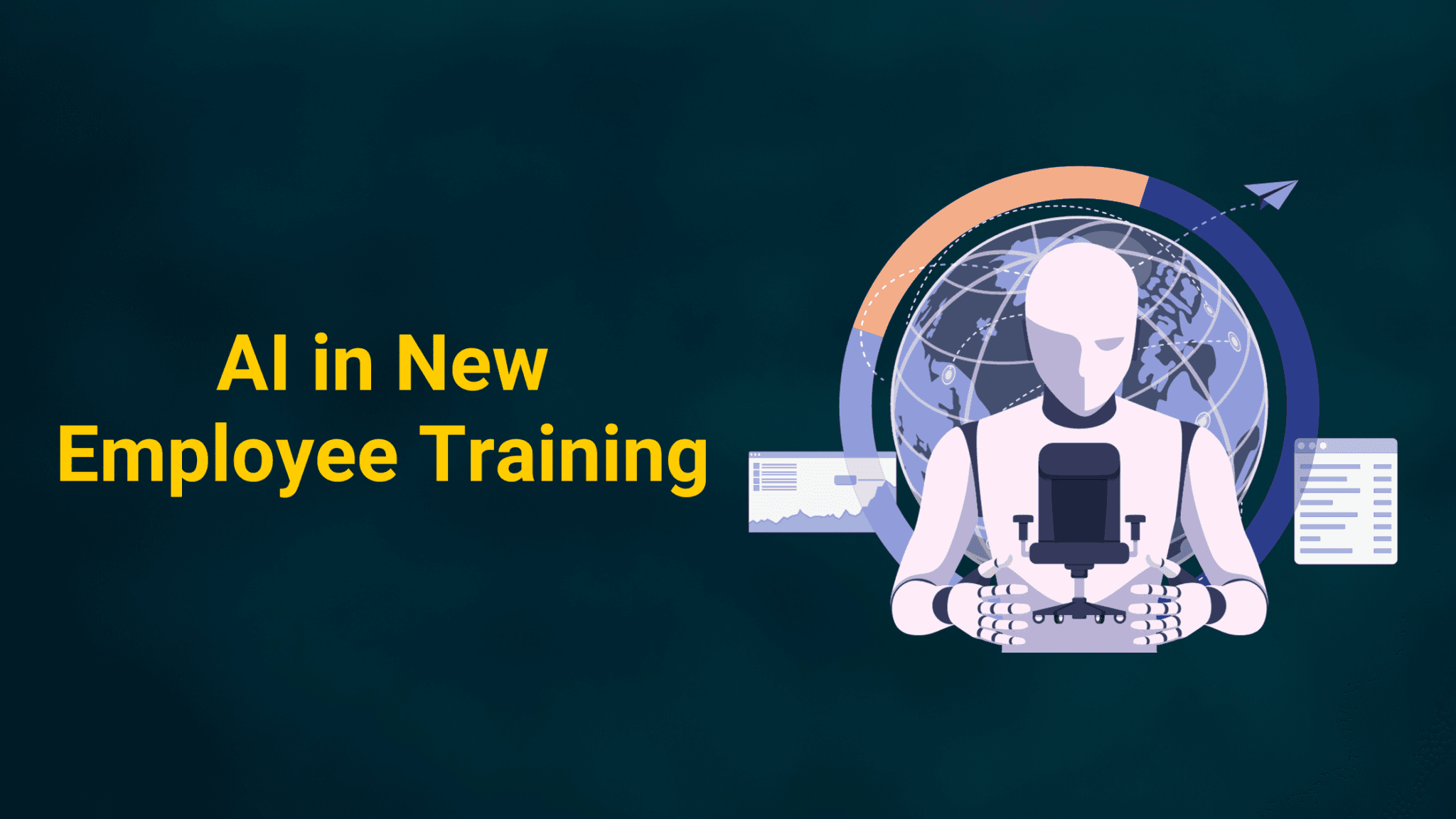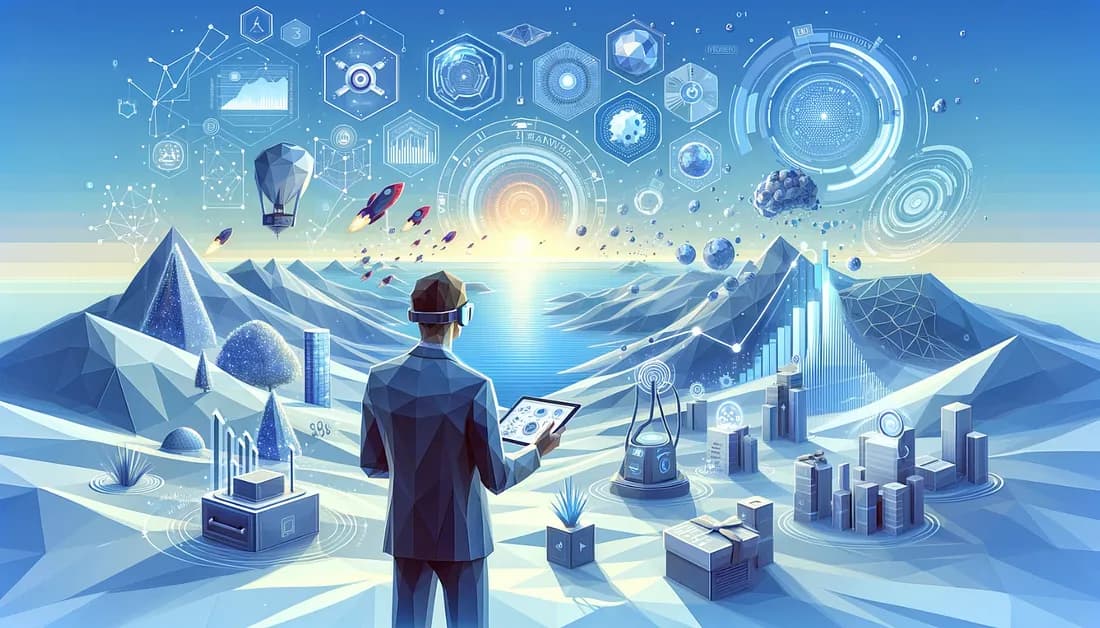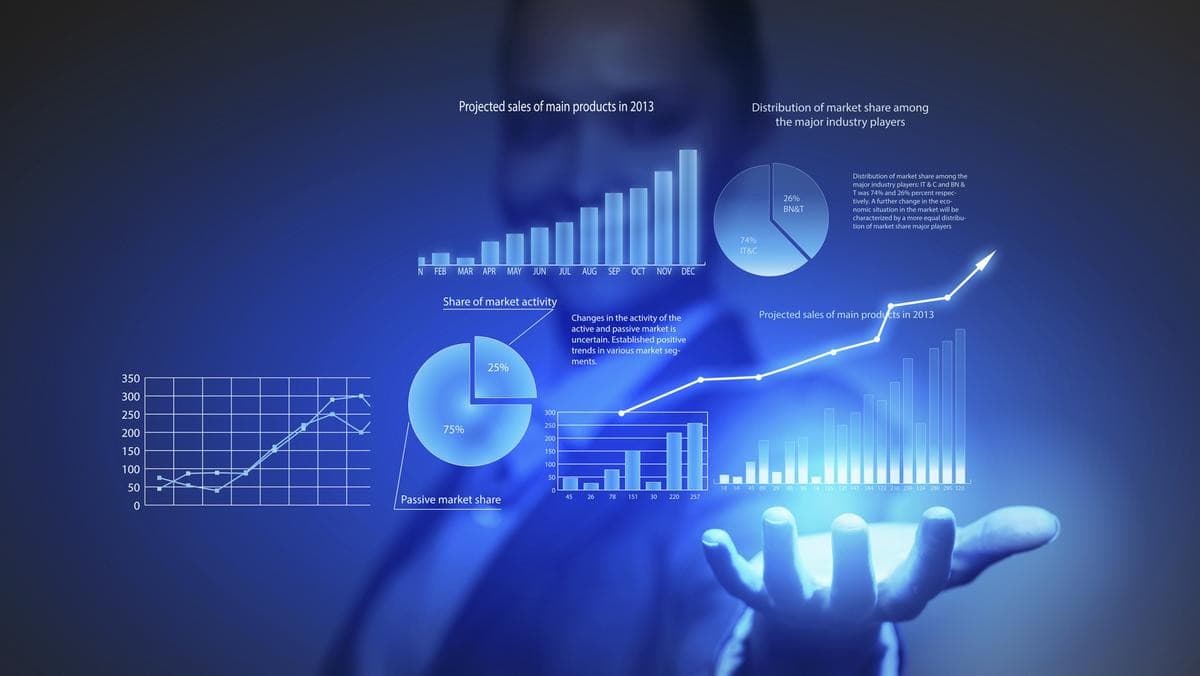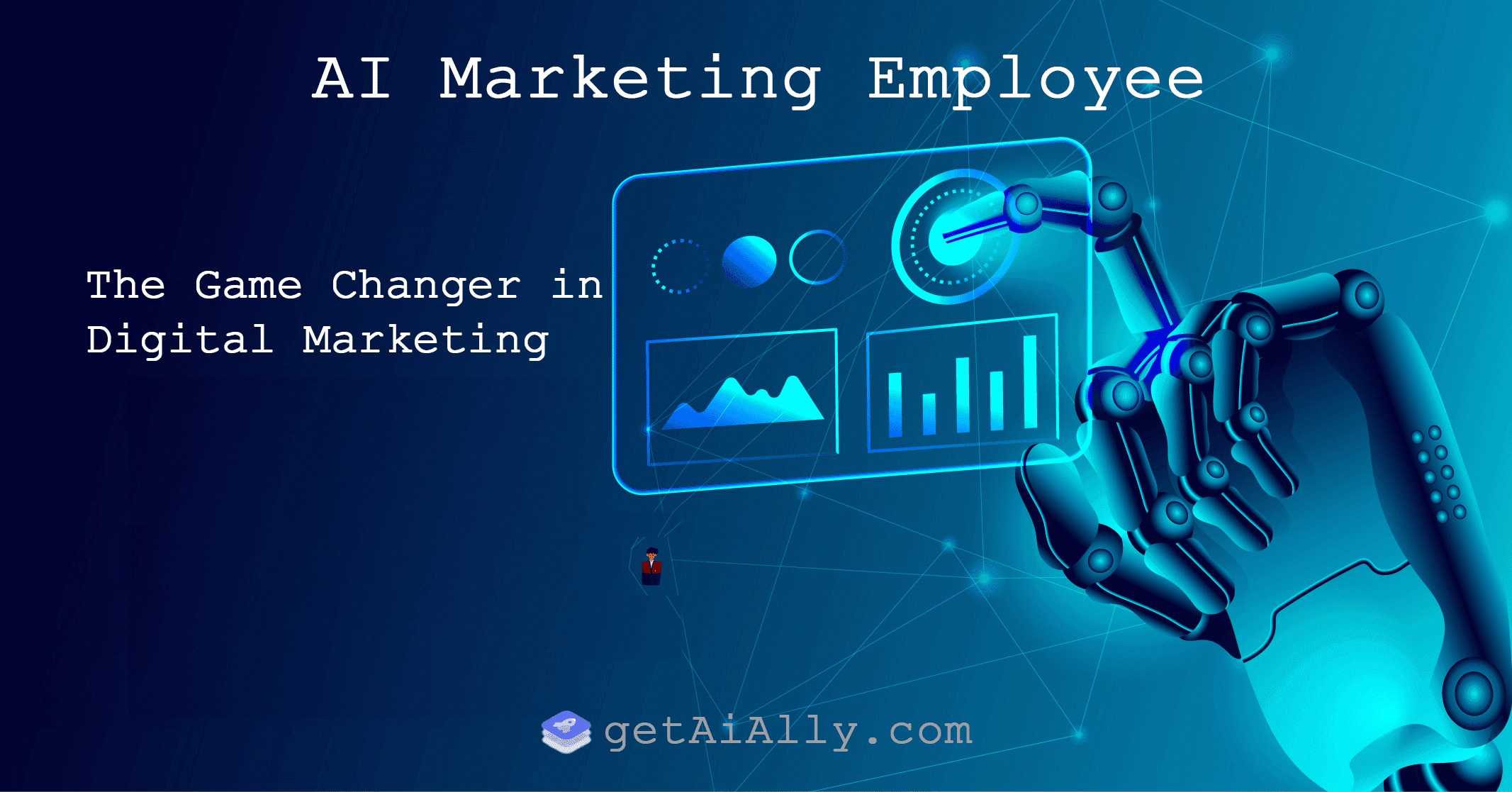AI Employee Training and Performance Management Innovation: Intelligent Strategies to Unleash Employee Potential

Lawrence Liu
9/14/2024

Maximizing Employee Potential: AI-Driven Employee Training and Performance Management Strategies
In today's rapidly changing business environment, continuous employee development and effective performance management are crucial to the success of enterprises. Artificial Intelligence (AI) technology is fundamentally changing these areas, providing businesses with unprecedented tools to maximize employee potential. This article will delve into how AI is transforming employee training and performance management, and how businesses can leverage these innovations to build a more efficient, flexible, and productive workforce. From AI employee training systems to intelligent performance evaluations, we will comprehensively analyze how AI-driven employee development strategies are shaping the future workplace.
1. How Artificial Intelligence Revolutionizes Employee Training
Traditional employee training methods often adopt a one-size-fits-all approach, making it difficult to meet the unique needs of each employee. The introduction of AI employee training technology has fundamentally changed this situation, making training more personalized, interactive, and effective.
1.1 AI-Driven Personalized Learning Paths
AI systems can analyze each employee's skill level, learning style, and career goals to create truly personalized learning experiences:
- Skill Gap Analysis: AI can assess employees' current skill levels, compare them with the skills required for their roles, and identify areas for improvement.
- Adaptive Learning Content: Based on employee progress and performance, AI can dynamically adjust the difficulty and content of learning materials.
- Personalized Recommendations: Based on employees' interests and career development paths, AI can recommend relevant courses and training resources.
This flowchart demonstrates how AI drives personalized learning paths. Starting from employee profiles, through AI analysis, it generates personalized learning plans, then conducts skill gap analysis, provides adaptive content, and continuously tracks learning progress. This cyclical process ensures the continuity and personalization of learning.
1.2 Real-Time Feedback and Guidance
AI makes continuous learning and instant feedback possible:
- Intelligent Q&A Systems: AI-driven chatbots can answer employee questions around the clock, providing immediate support.
- Performance Tracking: AI can monitor employee performance in real-time during training, providing timely feedback and suggestions.
- Microlearning Push: Based on employees' daily workflows, AI can push short, relevant learning content to promote continuous learning.
1.3 Virtual Reality (VR) and Augmented Reality (AR) Training
The combination of AI with VR/AR technology has brought revolutionary changes to employee training:
- Immersive Learning Experience: VR can create highly realistic simulated environments, allowing employees to practice complex or dangerous tasks in a safe virtual space.
- Scenario Simulation: AI can dynamically adjust VR/AR training scenarios based on employee responses, providing more realistic and challenging learning experiences.
- Remote Collaborative Training: AR technology combined with AI can support real-time guidance from remote experts, particularly suitable for technical training and on-site support.
2. Artificial Intelligence Optimizes Employee Scheduling
AI also plays an important role in optimizing employee scheduling, not only improving operational efficiency but also enhancing employee satisfaction. AI employee scheduling systems are becoming an important component of intelligent human resource management.
2.1 Predictive Scheduling
AI can analyze historical data, seasonal trends, and special events to predict future manpower needs:
- Demand Forecasting: AI algorithms can accurately predict employee needs for different time periods, avoiding understaffing or overstaffing.
- Skill Matching: Ensure that each shift has employees with the appropriate skill combination, optimizing team performance.
2.2 Automated Schedule Optimization
AI can generate optimal scheduling solutions while considering multiple constraints:
- Regulatory Compliance: Automatically consider factors such as labor regulations and working hour limits.
- Cost Optimization: Minimize overtime and labor costs while meeting operational needs.
- Fair Distribution: Ensure fair distribution of work hours and shifts, improving employee satisfaction.
2.3 Employee Preference Integration
AI scheduling systems can consider employees' personal preferences and constraints:
- Flexibility: Allow employees to input their available times and preferences.
- Automatic Exchange: Facilitate shift exchanges between employees while ensuring coverage and compliance.
- Work-Life Balance: Help employees better balance work and personal life through intelligent scheduling.
The following figure shows the comparison of AI-optimized scheduling before and after:
This chart clearly demonstrates the significant improvements brought by AI-optimized scheduling in terms of employee satisfaction, scheduling efficiency, and cost savings. The data is sourced from multiple authoritative studies, including Deloitte's "2020 Global Human Capital Trends" report, Gartner's "2021 HR Leaders Survey", and McKinsey's "The State of AI in 2021" report. These data show that AI-optimized scheduling can increase employee satisfaction from 20% to 40%, improve scheduling efficiency from 30% to 70%, while increasing cost savings from 10% to 30%.
3. AI-Driven Performance Evaluation
Traditional performance evaluations are often subjective, infrequent, and lack actionable insights. AI performance evaluation technology is changing this situation, making performance management more objective, continuous, and meaningful.
3.1 Continuous Performance Tracking
AI systems can continuously collect and analyze employee performance data:
- Real-Time Monitoring: By integrating data from various work tools and platforms, AI can track employee productivity and output in real-time.
- Multi-Dimensional Evaluation: AI can consider multiple performance indicators simultaneously, providing comprehensive assessments.
- Anomaly Detection: Identify sudden changes or abnormal patterns in performance, allowing for timely intervention or support.
3.2 Data-Driven Performance Insights
AI can extract valuable insights from large amounts of data:
- Trend Analysis: Identify long-term performance trends and patterns.
- Predictive Analytics: Predict future performance, helping to take early action.
- Team Dynamics Analysis: Evaluate team collaboration effectiveness, identifying factors affecting team performance.
3.3 Fair and Objective Evaluation
AI can help eliminate human bias, providing fairer evaluations:
- Standardized Assessment: Use consistent standards for evaluation across different departments and teams.
- Bias Detection: Identify and flag potential evaluation biases.
- 360-Degree Feedback: Integrate feedback from multiple sources to provide a comprehensive evaluation perspective.
The following figure shows a comparison between AI-assisted performance evaluation and traditional performance evaluation:
This comparison chart clearly demonstrates the advantages of AI-assisted performance evaluation compared to traditional methods. The data is sourced from multiple authoritative studies, including research by Cappelli et al. (2020), analysis by Cheng & Hackett (2021), and reports by Tambe et al. (2019). These studies show that AI-assisted evaluation can achieve an accuracy rate of 95%, while traditional methods only achieve 60%. AI evaluation offers advantages such as continuous monitoring, data-driven insights, and objective indicators, while traditional methods have limitations such as high subjectivity and limited data.
4. Steps to Implement AI Employee Training and Performance Management Systems
- Assess Current Situation: Review existing training and performance management processes, identifying areas for improvement.
- Define Objectives: Clearly define specific goals for implementing AI systems, such as improving training effectiveness, optimizing resource allocation, or enhancing the accuracy of performance evaluations.
- Select Appropriate AI Solutions: Choose suitable AI tools and platforms based on enterprise needs. Consider scalability, integration capabilities, and user-friendliness.
- Data Preparation: Ensure sufficient high-quality data is available to train and optimize AI models. This may include historical training records, performance data, and employee feedback.
- Pilot Testing: Conduct pilot tests on a small scale, collect feedback, and make necessary adjustments.
- Phased Implementation: Gradually roll out the AI system, ensuring a smooth transition and adoption.
- Training and Change Management: Provide necessary training for employees and managers to help them understand and effectively use the new system.
- Continuous Monitoring and Optimization: Regularly evaluate the performance of the AI system, continuously optimizing based on feedback and new data.
Implementing AI employee training systems not only improves training effectiveness but can also bring considerable return on investment (ROI). The following figure shows the ROI trend after enterprises adopt AI training systems:
This chart shows the ROI trend over time after enterprises adopt AI training systems. The data is sourced from multiple authoritative studies, including Brandon Hall Group's "2020 Learning Strategy Study", research by Bersin by Deloitte, and Fosway Group's "Digital Learning Realities 2021" study. The chart shows that although there may be negative ROI (-50%) in the initial implementation period, ROI rapidly increases over time, reaching 50% after 1 year, 150% after 2 years, and as high as 250% after 3 years. This highlights the long-term value and importance of AI training systems.
5. Case Studies: Companies Successfully Applying AI for Employee Training and Performance Management
-
IBM's Watson Career Coach: IBM uses an AI-driven career coaching system to provide personalized career development advice and learning resource recommendations for employees. This not only improved employee engagement but also helped the company better retain talent.
-
Unilever's AI-Driven Recruitment and Training: Unilever uses AI technology to assess candidates and create personalized onboarding and training plans for new employees. This significantly improved recruitment efficiency and new employee retention rates.
6. Challenges and Solutions
Enterprises may face some challenges when implementing AI-driven training and performance management systems:
-
Data Privacy Concerns
- Solution: Implement strict data protection measures, ensure transparency, and obtain informed consent from employees.
-
Resistance to Technology Adoption
- Solution: Provide comprehensive training and support, emphasize the benefits of AI systems, and encourage employee participation in the implementation process.
-
Explainability of AI Decisions
- Solution: Choose AI systems that can provide clear decision explanations, ensuring human managers understand and can explain AI recommendations.
-
Ensuring Fairness and Avoiding Bias
- Solution: Regularly review AI system decisions, use diverse training data, and maintain human oversight.
7. Future Trends: The Role of Artificial Intelligence in Employee Development
As AI technology continues to advance, we can anticipate the following trends:
- Predictive Career Planning: AI will be able to predict optimal career development paths based on employees' skills, interests, and market demands.
- Emotional Intelligence Training: AI systems will be able to identify and help cultivate employees' emotional intelligence, which is crucial for leadership development and team collaboration.
- Holographic Training: Combining AI and holographic technology to create more immersive and interactive training experiences.
- Real-Time Skill Assessment: AI will be able to continuously assess skill levels during employees' daily work, providing instant feedback and learning suggestions.
- AI-Assisted Innovation: AI systems will help employees stimulate creativity, providing innovative ideas and problem-solving solutions.
The application areas of AI in employee training are continuously expanding. The following figure shows the main application areas of AI in employee training and their proportions:
This pie chart shows the main application areas of AI in employee training and their proportions. The data is sourced from multiple authoritative studies and industry reports, including LinkedIn's "2021 Workplace Learning Report", Udemy for Business's "2021 Learning Trends Report", and Gartner's "2021 HR Technology Market" report.
The chart shows that personalized learning paths account for 30%, adaptive content delivery for 25%, virtual reality training for 20%, automated skill assessment for 15%, and AI-driven chatbots for 10%. These data reflect the current application trends of AI in employee training, highlighting the importance of personalization and adaptive learning.
Conclusion: Embracing the New Era of AI-Driven Employee Development
The application of artificial intelligence in employee training and performance management is opening up exciting possibilities. Through AI employee training systems, intelligent performance evaluations, and AI-optimized scheduling systems, enterprises can provide employees with unprecedented personalized development opportunities. This AI-driven employee development strategy not only improves training effectiveness and the accuracy of performance management but also creates significant competitive advantages for enterprises.
However, successful implementation of AI systems requires careful planning, continuous optimization, and attention to ethical considerations. Enterprise leaders need to closely monitor the latest developments of AI technology in the field of human resource management and consider how to best leverage these innovations to create a more attractive, efficient, and fulfilling work environment.
By embracing AI technology, enterprises can not only improve efficiency and performance but also create more opportunities for employee growth and development. The true potential of future workplaces lies in the collaboration between AI and human intelligence. Enterprises need to find the right balance, leveraging the power of AI to enhance rather than replace human capabilities, thereby creating a mutually beneficial environment that drives the joint success of individuals and organizations.
As AI employee training, AI performance evaluation, and intelligent human resource management continue to develop, we are standing at the forefront of a revolution in employee development. Those enterprises that can effectively utilize these tools will have an advantageous position in the future talent market, cultivating a more advanced, flexible, and innovative workforce. Now is the best time for enterprises to rethink their employee development strategies and begin implementing AI-driven solutions.
Let us together welcome this new era of AI-empowered employee development, unleashing the maximum potential of each employee, and driving enterprises towards a better future. In this rapidly changing digital age, continuous learning and adaptability will become the key to individual and organizational success. AI is not just a technological tool; it is becoming a catalyst for employee development and organizational change, opening doors to unlimited possibilities for us.
Enterprise leaders should actively explore the application of AI in employee training and performance management, but at the same time, they should proceed with caution, ensuring that the application of technology always puts people first and serves the long-term interests of employees and organizations. By combining the efficiency of AI with human creativity, we can build a more intelligent, inclusive, and vibrant work environment, preparing for future challenges.
Finally, it is worth emphasizing that although AI technology brings enormous opportunities, it cannot completely replace the role of humans in employee development. Instead, it should be viewed as a powerful auxiliary tool, helping human resource professionals and managers make more informed decisions, provide more personalized support, and create more meaningful employee experiences. In this new AI-driven era, humanized leadership, empathetic communication, and innovative thinking will be more important than ever.
Let us embrace this transformation with an open, curious, and responsible attitude, jointly shaping a future workplace full of vitality, continuous learning, and constant progress. AI-driven employee training and performance management is not only a technological innovation but also a profound transformation of organizational culture and work methods. By wisely applying these innovative tools, we have the opportunity to redefine the meaning of work, enhance employee satisfaction and engagement, and create lasting competitive advantages for enterprises.
In this new era full of opportunities and challenges, let us move forward hand in hand, jointly exploring the infinite possibilities of collaboration between AI and human intelligence, creating a brighter future for every employee and every organization.
Related Posts

AI-Driven Personalized Marketing: Redefining the New Paradigm of Customer Experience
Dive deep into how AI marketing employees are revolutionizing personalized marketing strategies. From precise customer profile construction to dynamic content generation, understand how AI creates unprecedented personalized customer experiences.

AI Marketing Employee: A New Paradigm for Data-Driven Decision Making
Explore how AI marketing employees are revolutionizing data processing and analysis. Learn how this groundbreaking technology provides real-time insights, optimizes decision-making processes, and drives precision in marketing strategies.

AI Marketing Employee: The Game Changer in Digital Marketing
Explore how AI marketing employees are revolutionizing the digital marketing landscape. Learn how this groundbreaking technology enhances efficiency, precision, and creates unprecedented value for brands.




